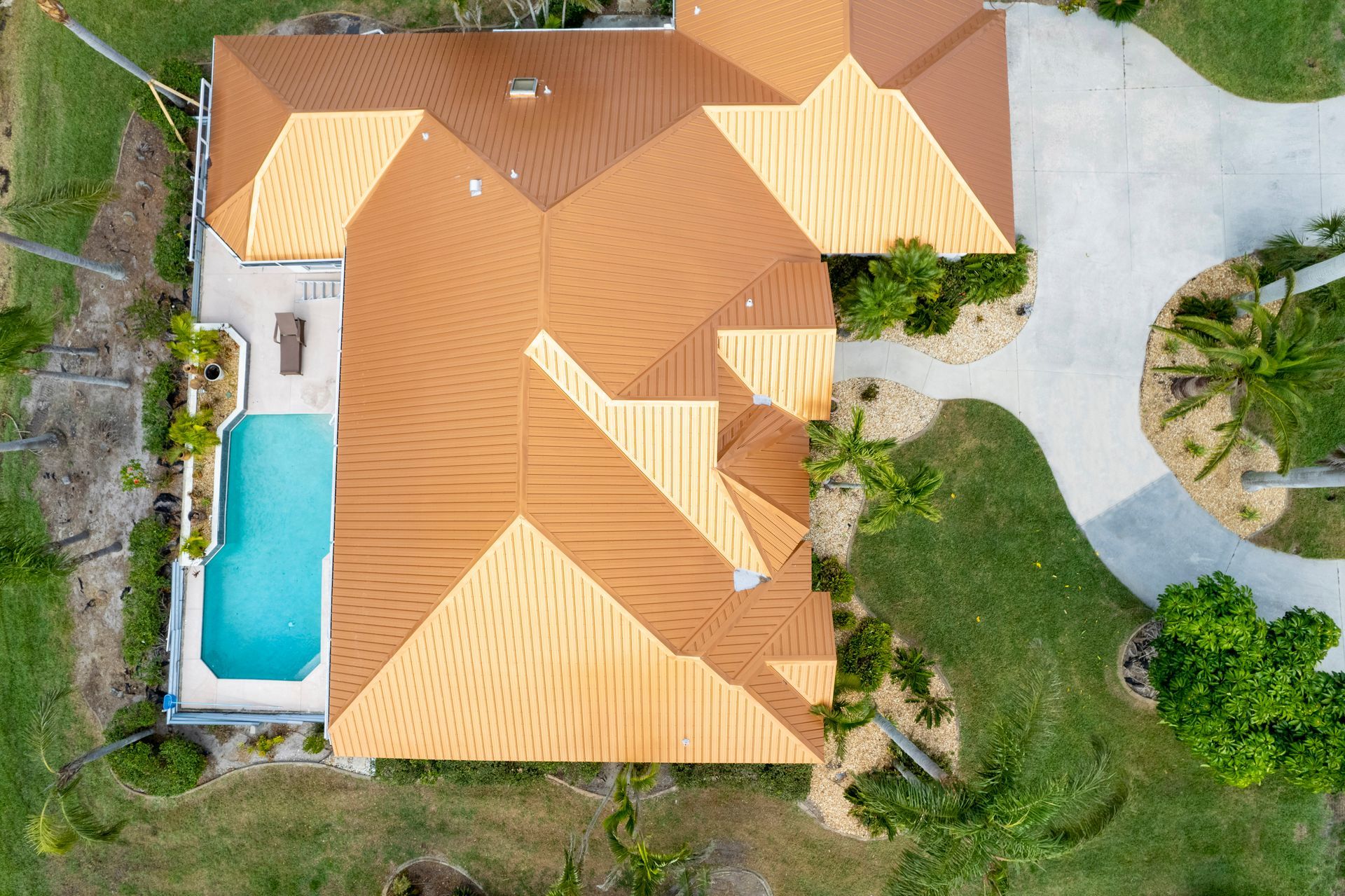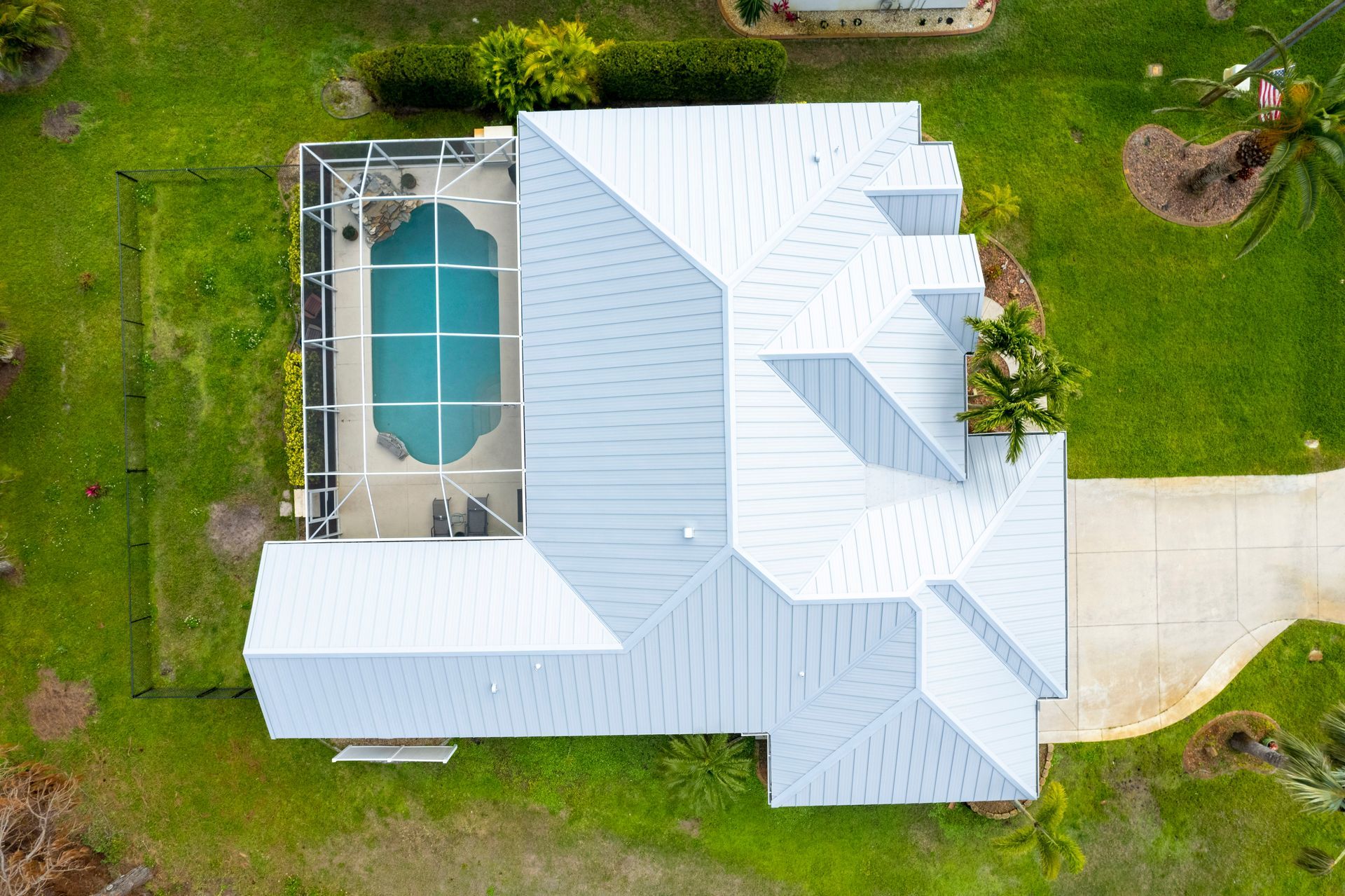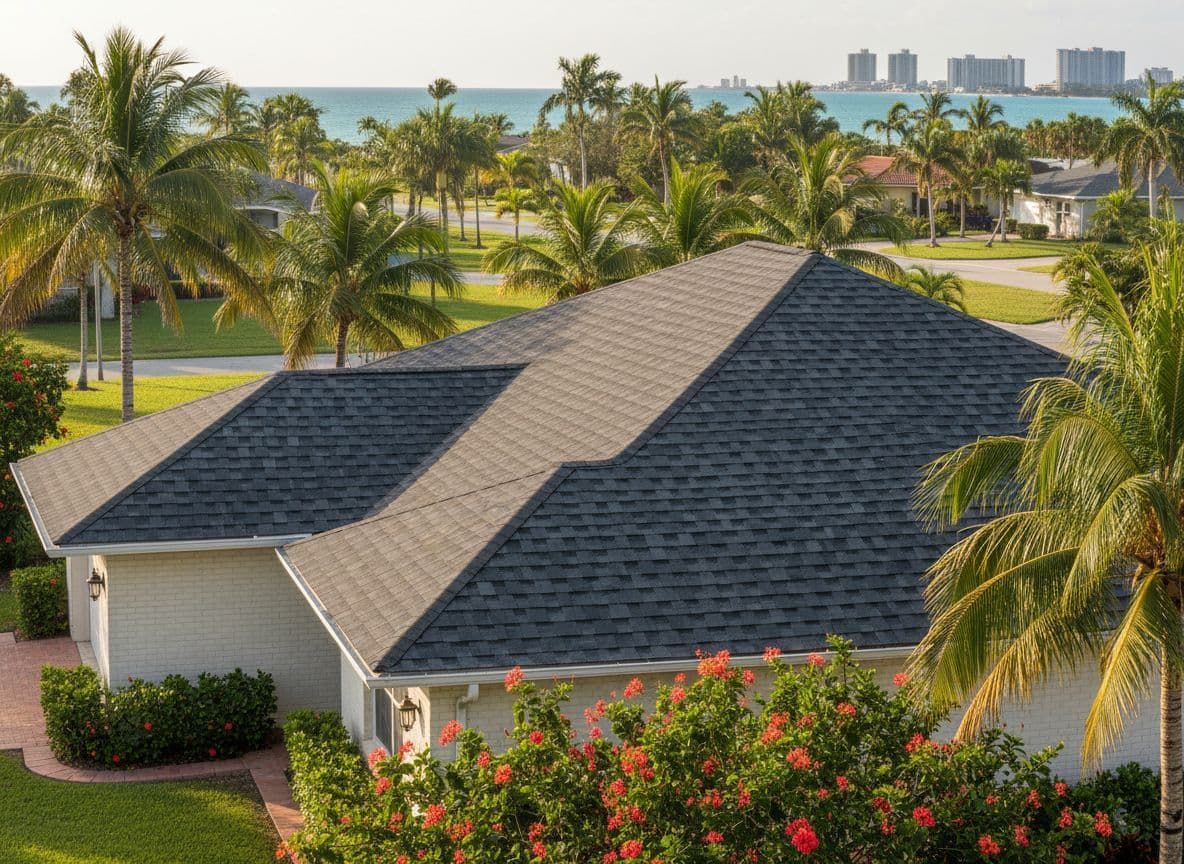A Homeowner's Guide to Roof Storm Damage in Ft. Lauderdale
Understanding Roof Storm Damage in Ft. Lauderdale
Ft. Lauderdale is no stranger to severe weather, with hurricanes, tropical storms, and heavy rain being regular occurrences. These storms can wreak havoc on residential roofs , causing everything from missing shingles to structural damage. High winds can tear away roofing materials, while relentless rain can seep into small cracks, leading to water intrusion and long-term issues. For homeowners, understanding the impact of these storms is crucial for protecting their homes. As the region’s climate continues to challenge roofing systems, staying informed about storm risks becomes a top priority.
The humid subtropical climate of Ft. Lauderdale, combined with its coastal location, makes it particularly vulnerable to roof damage. The combination of intense storms and prolonged exposure to moisture accelerates wear and tear on roofing materials. This unique environment means homeowners need to be extra vigilant in monitoring their roofs for signs of trouble. By recognizing the risks posed by local weather patterns, residents can take proactive steps to minimize damage and ensure their homes remain safe and secure.
Common Types of Storm Damage to Roofs
Storms in Ft. Lauderdale can cause a variety of roof damages, each with its own set of challenges. Wind-driven shingle loss is one of the most common issues, leaving the underlying layers exposed to the elements. Hail impacts can create dents or fractures in roofing materials, compromising their integrity. Gutter detachment and water intrusion are also frequent problems, as heavy rains overwhelm drainage systems and lead to leaks inside the home. Each type of damage requires timely attention to prevent further deterioration.
Flashing damage is another concern during storms, as high winds can loosen or displace these critical components. When flashing fails, water can penetrate vulnerable areas like chimneys and vents, leading to costly repairs. Additionally, structural risks such as sagging or weakened roof decking may arise if the storm is particularly severe. These issues are often caused by prolonged exposure to wind and rain, underscoring the importance of addressing even minor damage quickly to avoid more significant problems down the line.
Ignoring storm damage can lead to secondary issues that extend beyond the roof itself. Mold and rot are common consequences of delayed recognition, as trapped moisture creates an ideal environment for these hazards to thrive. Inside the home, water stains on ceilings and walls may indicate ongoing leaks, while musty odors suggest hidden damage. Early detection and repair are essential to prevent these secondary effects from escalating into major headaches for homeowners.
What to Do Immediately After a Storm
After a storm passes, safety should be your first priority. Avoid stepping onto wet or damaged surfaces, especially if there are downed power lines nearby. Be cautious when inspecting your property, as electrical hazards and unstable structures can pose serious risks. If you notice any immediate dangers, such as a collapsed section of your roof, contact emergency services right away to ensure everyone’s safety.
Once it’s safe to do so, begin documenting visible damage around your home. Look for missing shingles, water infiltration spots, and other signs of roof distress. Take clear photos of these areas, as they will serve as valuable evidence when filing an insurance claim. It’s also wise to jot down notes about what you observe, including the approximate size and location of the damage. After gathering this information, reach out to a professional roofer to schedule a thorough inspection.
How to Safely Inspect Your Roof for Storm Damage
Inspecting your roof after a storm doesn’t mean climbing up there yourself—a dangerous endeavor best left to professionals. Instead, start by examining your roof from the ground using binoculars if necessary. Look for obvious signs of damage, such as missing or curled shingles, loose flashing, and debris scattered across the rooftop. Pay close attention to areas where different sections of the roof meet, as these are common weak points during storms.
If you’re unable to assess the full extent of the damage from the ground, it’s time to call in a professional. A qualified roofer will conduct a comprehensive inspection , checking not only the surface but also the underlying layers and structural components. In Ft. Lauderdale, inspections typically include assessing the condition of shingles, flashing, gutters, and roof decking. Hiring an expert ensures that no potential issue goes unnoticed, giving you peace of mind about your roof’s condition.
Key signs of roof storm damage include curling or buckling shingles, loose or missing flashing, water stains on ceilings, and sagging areas. Early detection of these issues can save you from expensive repairs later on. By addressing minor problems promptly, you reduce the risk of them escalating into major structural failures. Remember, even seemingly small damages can compromise your roof’s ability to protect your home during future storms.
Preventative Measures for Future Storms
Regular maintenance is one of the best ways to prepare your roof for South Florida’s unpredictable weather. Schedule routine inspections at least twice a year to identify and address minor issues before they become major problems. Clear debris from your roof and gutters regularly, as clogs can exacerbate water damage during heavy rains. Keeping your roof clean and well-maintained significantly reduces the likelihood of storm-related damage.
For added protection, consider upgrading to storm-grade roofing materials designed to withstand high winds and hail. Reinforcing roof flashing and choosing durable options like metal or impact-resistant tiles can make a big difference. Working with local contractors who understand the unique challenges of Ft. Lauderdale’s weather ensures that your upgrades are tailored to the region’s needs. Taking these preventative steps now can pay off in the long run by extending the lifespan of your roof.
The Insurance Claims Process After Roof Storm Damage
Filing an insurance claim after roof storm damage involves several key steps. Start by thoroughly documenting the damage with photos and written descriptions. Next, contact your insurance provider as soon as possible to report the incident and initiate the claims process. Be prepared to provide detailed information about the damage and answer any questions they may have. An adjuster will likely visit your property to assess the situation and determine coverage eligibility.
In Ft. Lauderdale, homeowner’s insurance policies typically cover many types of storm-related roof damage, including wind and hail impacts. However, certain exclusions may apply, such as gradual wear and tear or improper maintenance. Understanding your policy’s terms and limitations is crucial to avoiding surprises during the claims process. If you’re unsure about what’s covered, ask your insurer for clarification before proceeding with repairs.
To maximize your claim, gather multiple estimates from reputable roofing contractors and compare them carefully. Keep records of all communications with your insurer and document every step of the repair process. Deciding between repairing or replacing your roof depends on factors like the extent of the damage and the age of the roof. Professional guidance can help you weigh the costs and benefits of each option, ensuring you make the best decision for your home.
Choosing the Right Roofing Professional in Ft. Lauderdale
Selecting the right roofing contractor is essential for quality workmanship and lasting results. Look for licensed professionals with extensive experience handling storm damage in Ft. Lauderdale. Check online reviews and ask for references to gauge their reputation. Responsiveness is another important factor, especially after a storm when prompt repairs are critical. A reliable contractor will prioritize your needs and provide transparent communication throughout the project.
Hiring a specialist in storm damage offers numerous advantages, including familiarity with local building codes and regulations. These experts understand the specific challenges posed by South Florida’s weather and use techniques tailored to withstand it. They can also guide you through the insurance claims process, helping you navigate paperwork and negotiations. Choosing a knowledgeable contractor ensures your roof is restored to its optimal condition, ready to face future storms.
Repair vs. Replacement: Making the Right Decision
Deciding whether to repair or replace your roof depends on several factors. Consider the extent of the damage, the age of the roof, and the materials currently in use. Minor issues like a few missing shingles or small leaks may only require patchwork, while widespread damage or an aging roof might necessitate a full replacement. Evaluating these aspects helps you determine the most cost-effective solution for your situation.
While repairs are generally quicker and less expensive, they may not address underlying issues or offer long-term durability. On the other hand, replacing your roof provides an opportunity to upgrade to stronger, more resilient materials. Although this option involves higher upfront costs, it can save money over time by reducing the frequency of repairs. Given Ft. Lauderdale’s storm-prone environment, investing in a durable roof is often worth the expense.
Common Repair Techniques and Materials for Storm Damage
Roofers employ various techniques to fix storm damage effectively. For torn-off shingles, they’ll replace the affected pieces and ensure proper alignment with surrounding areas. Flashing leaks are repaired by sealing gaps or reinstalling loose sections to restore watertight seals. Minor impact damage, such as dents from hail, may involve smoothing out metal components or applying protective coatings to prevent rust. These methods aim to restore functionality without requiring a complete overhaul.
When selecting materials for hurricane-prone regions like Ft. Lauderdale, durability is paramount. Asphalt shingles are popular due to their affordability and resistance to wind uplift. Metal roofs offer superior strength and longevity, making them ideal for withstanding severe weather. Tile roofs , commonly seen in South Florida, combine aesthetic appeal with excellent performance against storms. Choosing the right material ensures your roof remains resilient in the face of nature’s challenges.
How to Maintain Your Roof Year-Round in Ft. Lauderdale
A seasonal maintenance checklist is vital for keeping your roof in top shape throughout the year. During spring and summer, focus on cleaning gutters and removing debris buildup that could block drainage. Inspect for signs of wear and tear, such as cracked or missing shingles, and address them promptly. In the fall, trim overhanging tree branches that could snap and damage your roof during winter storms. Consistent upkeep minimizes the risk of unexpected issues.
Proactive reinforcement before hurricane season is equally important. Secure loose shingles and flashing to prevent them from being torn away by strong winds. Ensure gutters and downspouts are functioning properly to handle heavy rainfall. Regular inspections by a professional can identify potential vulnerabilities and allow you to fortify your roof accordingly. By staying ahead of maintenance tasks, you enhance your roof’s ability to protect your home year-round.
Recognizing Hidden Signs of Damage Inside Your Home
Sometimes, the first signs of roof storm damage appear inside your home rather than on the exterior. Water stains on ceilings and walls often indicate leaks, while mold growth suggests prolonged moisture exposure. Musty odors or peeling paint can also signal underlying problems. These interior clues may point to compromised flashing, damaged shingles, or blocked gutters allowing water to infiltrate your living space.
Detecting these hidden signs early can prevent extensive repairs and complications with insurance claims. Addressing minor issues promptly reduces the likelihood of mold spreading or structural damage worsening. By staying vigilant and acting swiftly, you safeguard both your home’s integrity and your financial well-being. Regularly checking for these indicators ensures your roof remains a reliable barrier against the elements.
Frequently Asked Questions About Roof Storm Damage in Ft. Lauderdale
What are the most obvious signs my roof was damaged in a storm?
The most obvious signs of roof storm damage include missing or displaced shingles, granule loss that leaves bare patches, active leaks inside the house, and visible dents or punctures caused by hail. These indicators are easy to spot and should prompt immediate action to prevent further issues.
How quickly should I have my roof inspected after a storm?
It’s advisable to have your roof inspected within 24–48 hours after a storm. Prompt inspections help identify and address damage early, preventing costly repairs and expediting the insurance claims process. Delaying this step could result in additional harm or difficulties with your insurer.
Does homeowner's insurance in Ft. Lauderdale cover all types of storm damage?
Homeowner’s insurance in Ft. Lauderdale generally covers many types of storm damage, such as wind and hail impacts. However, gradual deterioration or pre-existing conditions may be excluded. Review your policy carefully to understand its coverage limits and exclusions.
Can I do temporary repairs myself while waiting for a professional?
Yes, you can perform simple temporary repairs, such as covering a leak with a tarp or securing loose shingles with roofing cement. However, prioritize safety and avoid risky activities. Temporary fixes are meant to buy time until a professional arrives, not replace expert intervention.
What can I do to minimize roof damage before the next storm?
To minimize roof damage, trim nearby trees to prevent falling branches, clean gutters to ensure proper drainage, reinforce weak spots like flashing, and consider upgrading to storm-resistant materials. These proactive measures strengthen your roof’s resilience against future storms.
Conclusion
Taking care of your roof is one of the most important steps you can take to protect your home in Ft. Lauderdale. Proactive maintenance, timely inspections, and professional assistance are essential for mitigating the risks posed by frequent storms. By staying vigilant and addressing issues early, you can avoid costly repairs and ensure your roof remains a reliable shield against the elements. Investing in your roof’s health not only safeguards your property but also provides peace of mind during hurricane season.
Don’t wait until the next storm hits— consult a local roofing specialist today for a post-storm inspection and review your insurance policy to understand your coverage. Regular maintenance and strategic upgrades will keep your roof in excellent condition, offering long-term security for your family and home.





